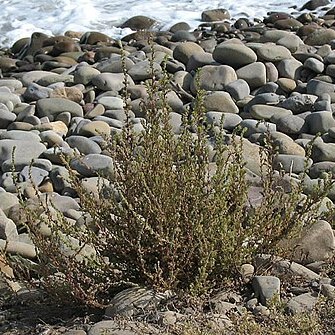Erect annual to 1 m high. Branches slender with thin cottony indumentum when young. Leaves linear to oblanceolate, 5–10 mm long, sparsely cottony or glabrous. Flowers in axillary clusters of 2 or 3. Fruiting perianth depressed-spherical, pilose, 5-lobed, with 5 uncinately incurved spines arising from base of lobes. Seed horizontal.
Plants 5-100 cm. Stems divari-cately branched or simple. Leaves sessile (or sometimes narrowed into pseudopetiole); blade lanceolate-elliptic, lanceolate, or linear, flat, base cuneate. Inflorescences with ± straight axes. Perianth segments with thin, hooked spine adaxially at maturity. 2n = 18.
Much like no. 1 [Bassia hirsuta (L.) Asch.]; lvs flat, to 2(–3.5) cm; spikes slender, terete, 4 mm thick, with straight axis; all sep with a slender, hooked dorsal spine; 2n=18. Native of Eurasia, intr. especially along the seashore from Mass. to N.J., and also in w. U.S.

